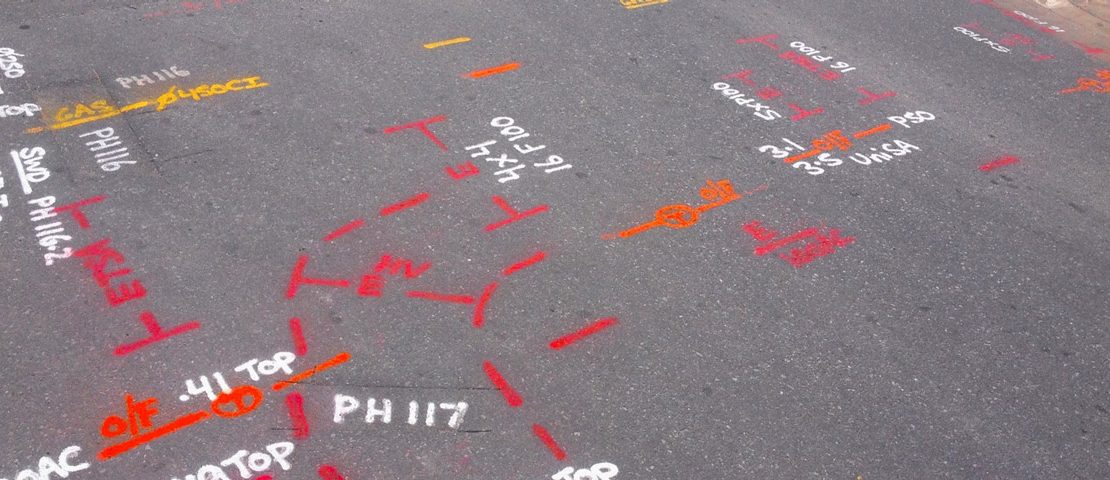How accurate is underground utility locating?

As a Utility Locator, the one question that is often asked by our clients is: “How accurate is underground utility locating”? Utility Locating is not an exacting science, and whilst there have been technological advances in the equipment, unfortunately, the skills levels of some locators has not improved. Another question that is often asked is “What’s the safe distance excavate away from marked underground utilities? Unfortunately, there is no precise answer however there are some good practices that if followed will drastically reduce the possible risk of damaging the Utility by injuring one’s self.
Each of the Utility Asset owners will have documented what they require when working around their assets. These need to be known and adhered to. You must meet your Duty of Care Requirement to remain compliant while working around Utilities.
Additionally Dial Before You Dig, which provides a free national referral service designed to prevent damage and disruption to the vast pipe and cable networks which provides Australia with essential services, also provides many resources to aid in damage prevention.
DBYD in consultation with Telstra have developed what they term:
There is an easy way to ensure you take all of the right steps in making your excavation project a success. Just follow the 4 P’s of Excavation:
Plan
Plan your job. Use the Dial Before You Dig service at least two business days before your job is due to begin to ensure you have the correct information you need to carry out a safe project.
Pothole
Potholing (hand digging) is a method to assist in establishing the exact location of all underground infrastructure.
Protect
Protecting and supporting the exposed infrastructure is the responsibility of the excavator. Always erect safety barriers in areas at risk to protect underground networks.
Proceed
But only when you have planned, potholed, and put the protective measures in place.
Dial Before You Dig – the Essential First Step of Excavation. Visit us now at www.1100.com.au and lodge your inquiry online. Inquiries can also be lodged by calling our national call center on 1100 during business hours.
Before starting
- use facility records and a visual inspection to gather site information to determine hazards, exposures, and/or other potential safety problems
- identify any site characteristics that may impact safety on the job
- locate potentially dangerous physical obstructions and plan how to work around them
- consider traffic hazards
- identify soil conditions and other factors like trenches, pits, bores, standing water, etc. that could affect safety and plan how to work around them
- locate the nearest hospital, fire department, police department, and any other relevant emergency response organization and how to get there
- develop a safety plan including procedures, employee roles, equipment, and time requirements
When locating assets
- the owner/operator and locator must identify all hazards and train employees to be aware of them while conforming to federal, state/territory, and local regulations, and industry codes
Worker safety
You have a Duty of Care to ensure that:
- employees and subcontractors are trained and briefed on all safety measures such as exposure to potentially hazardous conditions, avoiding unnecessary risks, and putting safety first
- all workers wear high-visibility clothing and personal protection
- safety features for ladders, electrical test devices, and other instruments are in working order
- any confined space your workers have to enter is safe, controlled, and adequately monitored and/or ventilated. Please note: Some Asset Owners have restrictions on entering confined spaces and have specific health and safety induction and training requirements
When you have finished
- ensure that all personnel and equipment are accounted for and the site is safe
- ensure that all safety-related equipment is returned/restored
- conduct a work-safety review of the locating activity and specify what improvements could be made
By following these simple steps and by using well-trained, experienced, and certified locators you will be well on the way to having a damage-free project.
Locating Unlimited is happy to provide any help or advice as well as being able to deliver training that will make the difference between an ordinary and a great locator underground utility locating.